
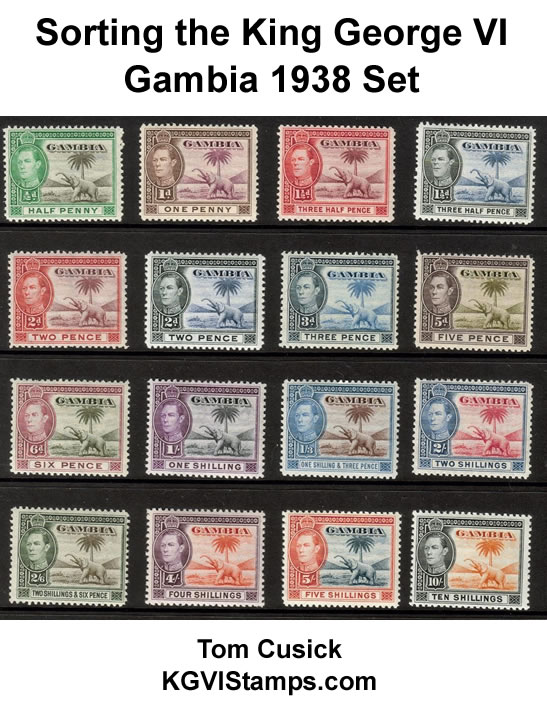
The Gambia KGVI set of stamps was printed from 1938 until 1952 when it was replaced by the first QEII set. The stamps were printed by Bradbury, Wilkinson who also produced the stamps of the Falkland Islands, Gambia, St. Vincent, and other colonies.
The goal of this page is to help you sort your stamps based on the information presented in 'The Stamps and Postal History of the Gambia' by J.O. Andrews, published in 1985 by the West Africa Study Circle. The article was based on the work of Frank Saunders which was originally published by the King George VI Collectors' Society. The article is the starting point for
sorting the stamps shown on this web site. The goal is to accurately convey the information as presented in the article and then to add updated catalog numbers, and interpretations of what was observed as the stamps were sorted.
My theory in sorting these and other KGVI stamps is that
if you accumulate enough good quality sets of stamps and compare them,
you should find the various printings. The stamps sorted for this website
were accumulated over about 40 years. There were between 15-25 stamps
of each value, so they should represent a reasonable sample of the range
of issues produced. The stamps were sorted starting with the high values
first because there are less possible options. The information learned
from the high values was used to make decisions about the low value stamps
where there are more possible alternatives.
The listing below shows the information transcribed from the original
published article. The catalog numbers added are subject to interpretation
since they were not all part of the original publication. Although it
is possible that there are additional listings, it is only our goal to
help you sort your stamps based on this starting point. So please feel
free to add any missing information by emailing using the link below.
The catalog numbers are from the 2008 Commonwealth Catalogue (CW), the 2011 Stanley Gibbons Stamp Catalogue (SG) and the 2011 Scott catalog (ST).
The images were saved in a larger size and at a higher resolution so you can more easily see the details used in sorting them. Please be patient if it takes a few minutes for this page to load, and just scroll down to read the entire thing. For those of you who are viewing this on a phone - find a PC. You will go blind if you try to read this on a small screen.
| Value | Date | Head Color | Frame Color | Paper & Gum Description | CW# | SG# | ST# |
| 1/2d | 1938 | Black | Bluish-Green | Medium thick off-white paper; whitish gum | 1 | 150 | 132 |
| 1/2d | 1939? | Brownish-Black | Yellowish-Green | Medium thick cream paper; cream gum | 1 | 150 | 132 |
| 1/2d | 11/1942 | Deeper Brownish-Black | Yellowish-Green | Thinner white paper; transparent white gum | 1 | 150 | 132 |
| 1/2d | 1/1947 | Greyish-Black | Green | Thin opaque paper; opaque white gum? | 1 | 150 | 132 |
| 1/2d | 9/1952 | Black | Yellow-Green | Thin brittle white paper; white gum | 1 | 150 | 132 |
| 1d | 1938 | Purple | Deep Brown | Medium thick off-white paper; whitish gum | 2 | 151 | 133 |
| 1d | 1939? | Bright Purple | Deep Grey-Brown | Medium thick cream paper; cream gum | 2 | 151 | 133 |
| 1d | 6/1943 | Reddish-Purple | Deep Grey-Brown | Thinner white paper; transparent white gum | 2 | 151 | 133 |
| 1d | 1/1947 | Mauve | Deep Grey-Brown | Thin opaque paper; opaque white gum? | 2 | 151 | 133 |
| 1d | 1/1950 | Reddish-Mauve | Deep Grey-Brown | Thin opaque paper; opaque white gum | 2 | 151 | 133 |
| 1d | 9/1950 | Deep Mauve | Deep Chocolate | Thin opaque paper; opaque white gum | 2 | 151 | 133 |
| 1d | 9/1952 | Deep Bright Mauve | Deep Chocolate | Thin brittle white paper; white gum | 2 | 151 | 133 |
| 1-1/2d | 1938 | Lake | Bright Carmine | Medium thick off-white paper; whitish gum | 3 | 152 | 134 |
| 1-1/2d | 1939? | Deep Lake | Carmine-Red | Medium thick cream paper; cream gum | 3a | 152a | 134 |
| 1-1/2d | 1940-41 | Dull Lake | Scarlet | Thinner off-white paper; creamy gum | 3a | 152b | 134 |
| 1-1/2d | 10/1944 | Violet-Blue | Grey-Black | Thin, white, rather transparent paper; transparent white gum | 4 | 152c | 134A |
| 1-1/2d | 1/1946 | Bright Blue | Grey-Black | Thin, white, rather transparent paper; transparent white gum | 4 | 152c | 134A |
| 1-1/2d | 2/1948 | Deep Bright Blue | Deep Grey-Black | Thin opaque paper; opaque white gum | 4 | 152c | 134A |
| 1-1/2d | 6/1948 | Bright Blue | Grey-Black | Thin opaque paper; opaque white gum | 4 | 152c | 134A |
| 1-1/2d | 1/1950 | Deep Blue | Grey-Black | Thin opaque paper; opaque white gum | 4 | 152c | 134A |
| 1-1/2d | 9/1950 | Duller Deep Blue | Grey-Black | Thin opaque paper; opaque white gum | 4 | 152c | 134A |
| 1-1/2d | 9/1952 | Deep Bright Blue | Deep Grey-Black | Thin brittle white paper; white gum | 4 | 152c | 134A |
| 2d | 1938 | Blue | Grey-Black | Medium thick off-white paper; whitish gum | 5 | 153 | 135 |
| 2d | 1939? | Dull Violet-Blue | Grey-Black | Medium thick cream paper; cream gum | 5 | 153 | 135 |
| 2d | 6/1943 | Deep Purplish-Lake | Scarlet | Thinner white paper; transparent white gum | 6 | 153a | 135A |
| 2d | 1/1946 | Lake | Scarlet | Thin, white, rather transparent paper; transparent white gum | 6 | 153a | 135A |
| 2d | 1/1950 | Lake | Paler Scarlet | Thin opaque paper; opaque white gum | 6 | 153a | 135A |
| 2d | 9/1950 | Mauvish-Lake | Paler Scarlet | Thin opaque paper; opaque white gum | 6 | 153a | 135A |
| 2d | 9/1952 | Rosy-Lake | Scarlet | Thin brittle white paper; white gum | 6 | 153a | 135A |
| 3d | 1938 | Light Blue | Deep Grey-Blue | Medium thick off-white paper; whitish gum | 7 | 154 | 136 |
| 3d | 1939? | Bright Light Blue | Deep Dull Grey-Blue | Medium thick cream paper; cream gum | 7 | 154 | 136 |
| 3d | 4/1945 | Dull Light Blue | Deep Dull Grey-Blue | Thin, white, rather transparent paper; transparent white gum | 7 | 154 | 136 |
| 3d | 1/1946 | Bright Light Blue | Deep Grey-Blue | Thin, white, rather transparent paper; transparent white gum | 7 | 154 | 136 |
| 3d | 6/1948 | Bright Light Blue | Deep Grey-Blue | Thin opaque paper; opaque white gum | 7 | 154 | 136 |
| 3d | 1/1950 | Bright Light Blue | Deep Blue | Thin opaque paper; opaque white gum | 7 | 154 | 136 |
| 3d | 9/1950 | Milky-Blue | Deep Blue | Thin opaque paper; opaque white gum | 7 | 154 | 136 |
| 3d | 9/1952 | Bright Light Blue | Deep Violet-Blue | Thin brittle white paper; white gum | 7 | 154 | 136 |
| 5d | 1941 | Olive-Green | Purple | Thinner white paper; transparent white gum | 8 | 154a | 136A |
| 5d | 6/1943 | Yellowish-Olive-Green | Deep Purple | Thinner white paper; transparent white gum | 8 | 154a | 136A |
| 5d | 7/1945 | Greenish-Olive Green | Brownish-Purple | Thin, white, rather transparent paper; transparent white gum | 8 | 154a | 136A |
| 5d | 6/1946 | Yellowish-Olive-Green | Brownish-Purple | Thin, white, rather transparent paper; transparent white gum | 8 | 154a | 136A |
| 6d | 1938 | Dark Olive-Green | Reddish-Claret | Medium thick off-white paper; whitish gum | 9 | 155 | 137 |
| 6d | 1939? | Yellowish-Olive Green | Duller Claret | Medium thick cream paper; cream gum | 9 | 155 | 137 |
| 6d | 6/1945 | Greenish-Olive Green | Dull Claret | Thin, white, rather transparent paper; transparent white gum | 9a | 155 | 137 |
| 6d | 1/1946 | Deep Greenish-Olive Green | Deep Dull Claret | Thin, white, rather transparent paper; transparent white gum | 9a | 155 | 137 |
| 6d | 1/1947 | Olive-Green | Deep Claret | Thin opaque paper; opaque white gum? | 9a | 155 | 137 |
| 6d | 2/1948 | Deep Greenish-Olive Green | Reddish-Claret | Thin opaque paper; opaque white gum | 9a | 155 | 137 |
| 6d | 1/1950 | Deep Greenish-Olive Green | Deep Purplish-Claret | Thin opaque paper; opaque white gum | 9a | 155 | 137 |
| 6d | 9/1950 | Greyish-Olive Green | Purplish-Claret | Thin opaque paper; opaque white gum | 9a | 155 | 137 |
| 6d | 9/1952 | Deep Yellowish-Olive Green | Purplish-Claret | Thin brittle white paper; white gum | 9a | 155 | 137 |
| 1/ | 1938 | Bluish-Slate | Bright Violet | Medium thick off-white paper; whitish gum | 10 | 156 | 138 |
| 1/ | 1939? | Slate | Purple-Violet | Medium thick cream paper; cream gum | 10 | 156 | 138 |
| 1/ | 6/1943 | Slate | Purple-Violet | Thinner white paper; transparent white gum | 10 | 156 | 138 |
| 1/ | 4/1945 | Greyish-Slate | Pale Purple | Thin, white, rather transparent paper; transparent white gum | 10 | 156 | 138 |
| 1/ | 1/1947 | Greenish-Slate | Purple-Violet | Thin opaque paper; opaque white gum? | 10 | 156 | 138 |
| 1/ | 1/1950 | Slate | Dull Purple-Violet | Thin opaque paper; opaque white gum | 10 | 156 | 138 |
| 1/ | 9/1950 | Greyish-Slate | Pale Violet | Thin opaque paper; opaque white gum | 10 | 156 | 138 |
| 1/ | 9/1952 | Greenish-Grey-Slate | Purple-Violet | Thin brittle white paper; white gum | 10 | 156 | 138 |
| 1/3 | 11/1946 | Deep Red-Brown | Light Blue | Thin, white, rather transparent paper; transparent white gum | 11 | 156a | 138A |
| 1/3 | 9/1950 | Chocolate | Deeper Light Blue | Thin opaque paper; opaque white gum | 11 | 156a | 138A |
| 2/ | 1938 | Bright Rose-Carmine | Blue | Medium thick off-white paper; whitish gum | 12 | 157 | 139 |
| 2/ | 1939? | Rose-Carmine | Blue | Medium thick cream paper; cream gum | 12 | 157 | 139 |
| 2/ | 4/1945 | Carmine | Deeper Blue | Thin, white, rather transparent paper; transparent white gum | 12a | 157 | 139 |
| 2/ | 1/1947 | Deep Carmine | Deep Bright Blue | Thin opaque paper; opaque white gum? | 12a | 157 | 139 |
| 2/ | 9/1950 | Rose-Carmine | Deep Bright Blue | Thin opaque paper; opaque white gum | 12a | 157 | 139 |
| 2/6 | 1938 | Sepia | Greyish-Olive | Medium thick off-white paper; whitish gum | 13 | 158 | 140 |
| 2/6 | 1939? | Brown-Sepia | Greenish-Olive | Medium thick cream paper; cream gum | 13 | 158 | 140 |
| 2/6 | 1/1946 | Brown-Sepia | Greenish-Olive | Thin, white, rather transparent paper; transparent white gum | 13 | 158 | 140 |
| 2/6 | 9/1950 | Pale Sepia | Pale Olive | Thin opaque paper; opaque white gum | 13 | 158 | 140 |
| 4/ | 1938 | Vermilion | Purple | Medium thick off-white paper; whitish gum | 14 | 159 | 141 |
| 4/ | 1939? | Orange-Vermilion | Bright Purple | Medium thick cream paper; cream gum | 14 | 159 | 141 |
| 4/ | 1/1947 | Bright Vermilion | Purple | Thin opaque paper; opaque white gum? | 14 | 159 | 141 |
| 5/ | 1938 | Dark Grey-Blue | Vermilion | Medium thick off-white paper; whitish gum | 15 | 160 | 142 |
| 5/ | 1939? | Dark Grey-Blue | Vermilion | Medium thick cream paper; cream gum | 15 | 160 | 142 |
| 5/ | 1/1947 | Dark Blue | Brighter Vermilion | Thin opaque paper; opaque white gum? | 15 | 160 | 142 |
| 10/ | 1938 | Orange | Grey-Black | Medium thick off-white paper; whitish gum | 16 | 161 | 143 |
| 10/ | 1939? | Orange | Grey-Black | Medium thick cream paper; cream gum | 16 | 161 | 143 |
| 10/ | 10/1944 | Yellower-Orange | Deeper Grey-Black | Thin, white, rather transparent paper; transparent white gum | 16 | 161 | 143 |
The listing can be pretty daunting at first, but there
is a lot of information that can be used to identify your stamps. These
steps will help you as you compare your stamps to the listing:
Paper & Gum Characteristics - Generally there are three
broad categories: Cream Paper, Medium White Paper, and Thinner White
Paper. You will find two versions of the cream paper, a couple of variations
in the medium white paper (which are not shown), and two alternatives
for the thinner white paper.
Color - Various shades were used in some printings that can help identify the stamps when viewed in relation to the other components like the paper and gum. I do not recommend just trying to compare colors alone.
Perforation - There are no significant differences in the perforation of these stamps. So this is not a factor in identification.
Here is an overview of how to compare your stamps using these traits. If you do them in the order presented, it is a lot easier.
I sort for paper and gum by placing the stamps from one value face down on black paper and looking at them in the middle of 2 spotlamps with 60 watt incadescent bulbs. This puts out a good light source and makes the stamp differences show up clearly. I start with the high value stamps and compare all of the stamps from one value at a time. In the case of Gambia, I had over 20 copies of each value, so there were a number of stamps to view. (Doing this with 2 stamps is not as effective.) Using this method, any toned or climate affected stamps are left out, the remaining stamps are sorted into three groups - creamy gum, thinner off-white gum and bright white gum. Once this has been done, I compare the creamy gum stamps to see if there are crackles in the gum (1938) or if it is smooth (1939). Then I focus on the bright white gum stamps to see if there are any that seem a lot whiter and have a slight texture to them (1952). Finally the off-white gum stamps are compared based on the level of transparency of the watermark (you only need this for the low values). When this is done, I look at the colors and compare them to my reference to make my decisions. I realize this is not very scientific, but that is why I titled this web site "Sorting the King George VI Gambia 1938 Set" and not "Identifying it".
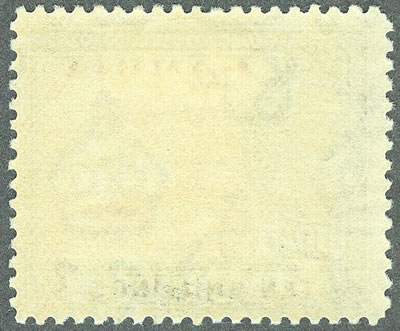
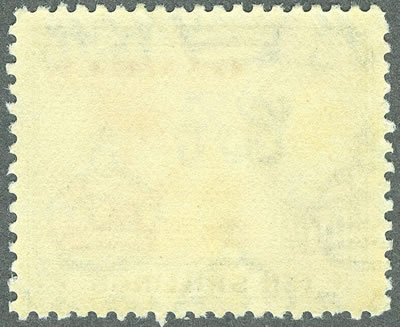
Medium, thick, off-white paper
Whitish gum
Medium, thick, cream paper
Cream gum
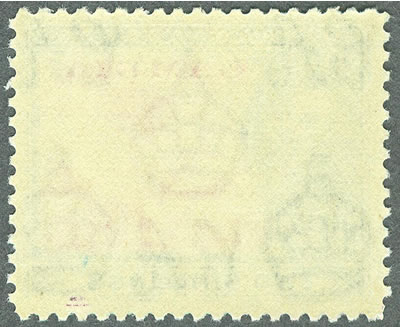
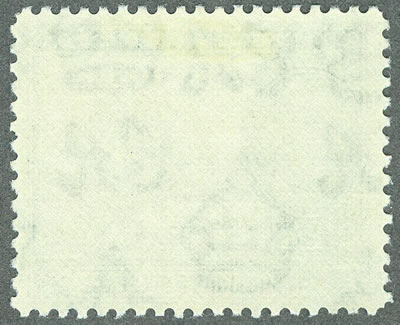
Thin, white, rather transparent paper
Transparent, white gum
Thin, opaque paper
Opaque, white gum
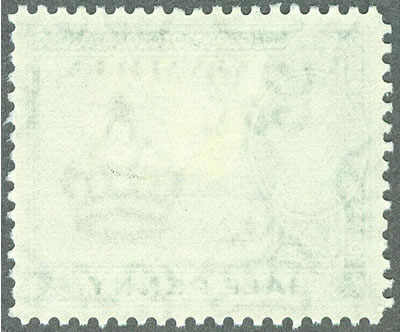
This is found on some of the low value stamps only.
You should see small ridges that are not present on the 1948-50 printings.
Thin, brittle white paper
White gum
Please remember as you view the listings that these are my best guesses as I sorted the stamps I have accumulated based on the description. It is possible there are errors, but in my opinion the results are consistent when compared to other stamps from the same relative time period.
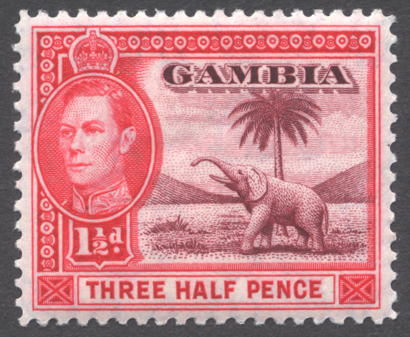
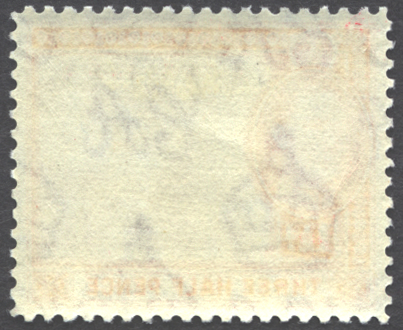
1938 Printing
Whitish gum
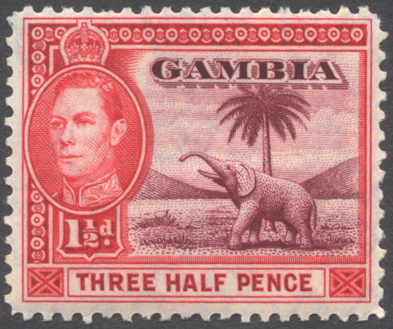
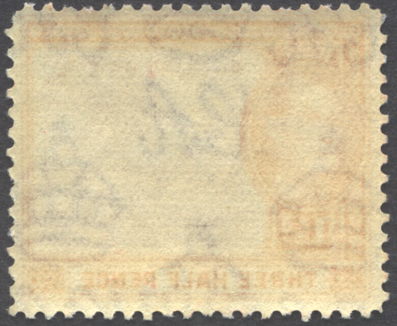
1939 Printing
Cream gum
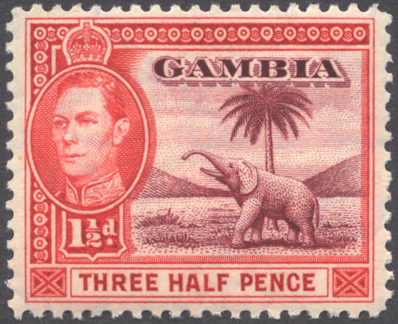
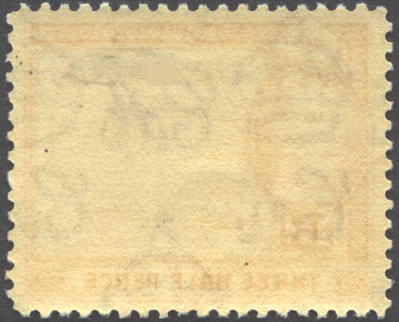
1940-41 Printing
Creamy gum
I will agree that it seems like the paper descriptions do not match what you see, but when you compare the other printings, they do seem to be correct.
The bright white paper of the 1950 printing seems a lot scarcer than the 1946 printing, so if you only have a few stamps, it is likely they are from the 1946 printing.
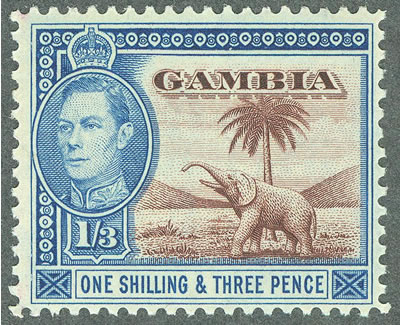
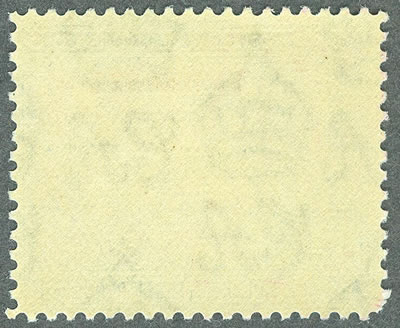
12/1946 Printing
Transparent, white gum
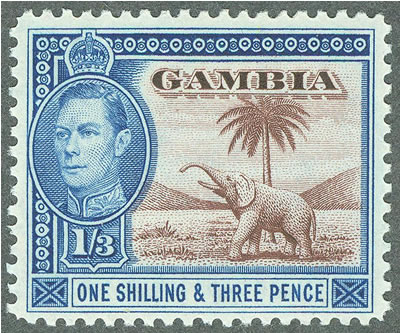
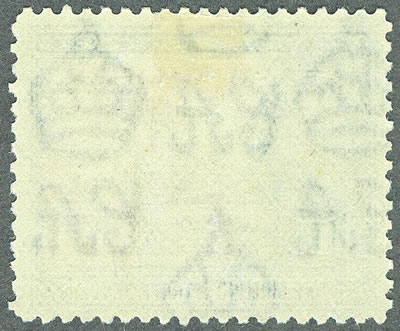
9/1950 Printing
Opaque, white gum
You cannot see the cracks that are visible in the 1938 printing in the scan, but they are very visible under a good light. The 1939 printing has a creamy colored gum and the watermark is not very transparent which makes the paper appear thicker. The 1945 paper seems to be the most transparent so the paper appears thinner (you will see the watermark when looking at it on top of black paper). The later printings are on a whiter and brighter paper compared to the 1945 paper. I found a lot of 1938 and 1945 printings, and not many of the other three. So if you can't decide on your stamps, they are probably from those two printings.
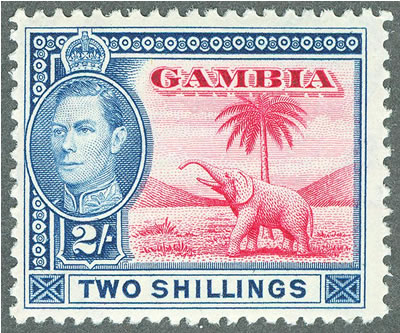
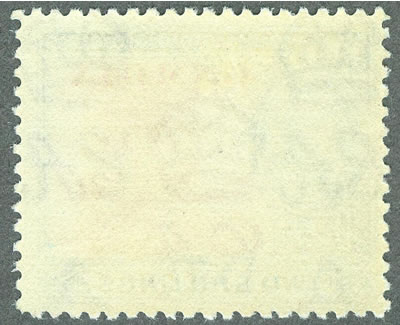
1938 Printing
Whitish gum
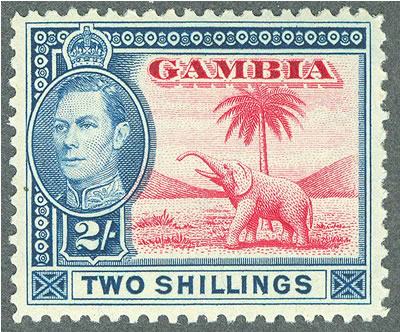
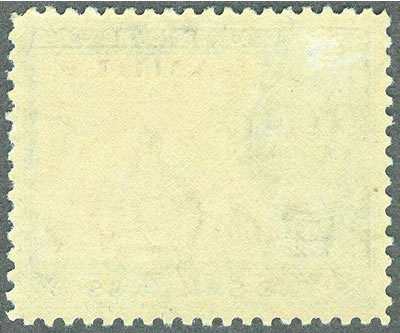
1939 Printing
Cream gum
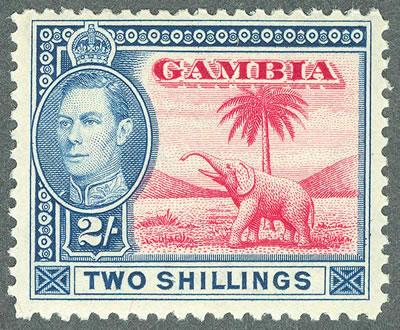

4/1945 Printing
Transparent, white gum
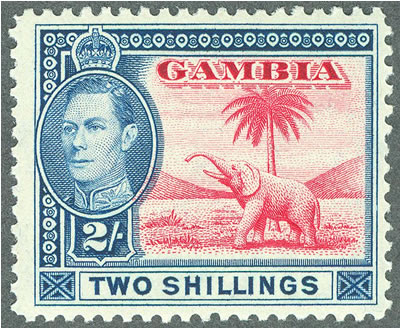
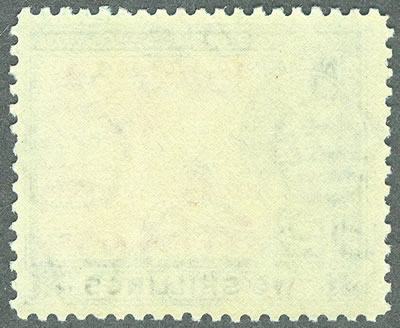
1/1947 Printing
Opaque, white gum
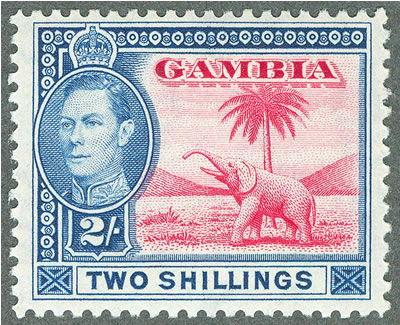
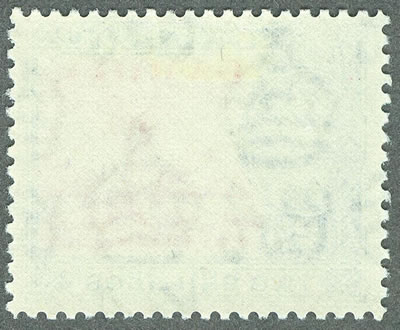
9/1950 Printing
Opaque, white gum
You cannot see the cracks that are visible in the 1938 printing in the scan, but they are very visible under a good light. The 1939 printing has a creamy colored gum and the watermark is not very transparent which makes the paper appear thicker. The 1946 paper seems to be the most transparent so the paper appears thinner (you will see the watermark when looking at it on top of black paper). The 1950 paper is whiter and brighter paper compared to the 1945 paper. I found a lot of 1938 and 1945 printings, and not many of the other two. So if you can't decide on your stamps, they are probably from those two printings.
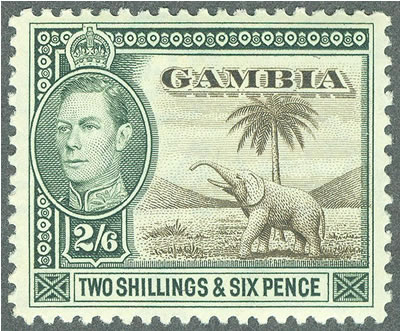
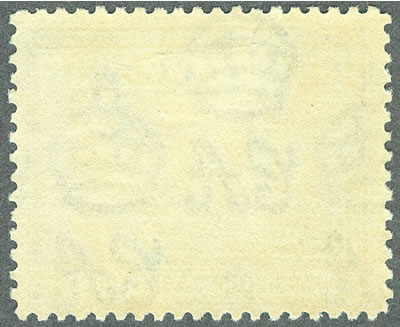
1938 Printing
Whitish gum
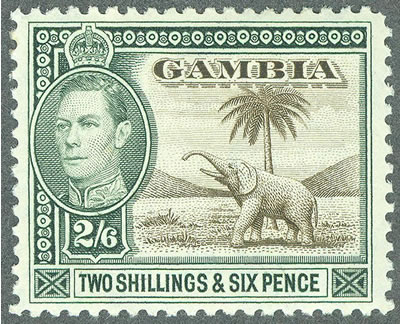
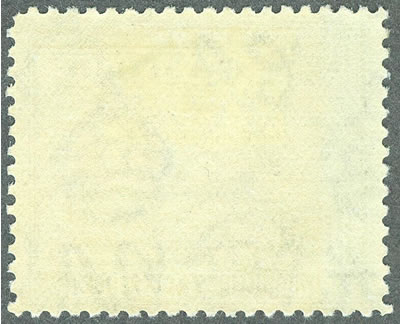
1939 Printing
Cream gum
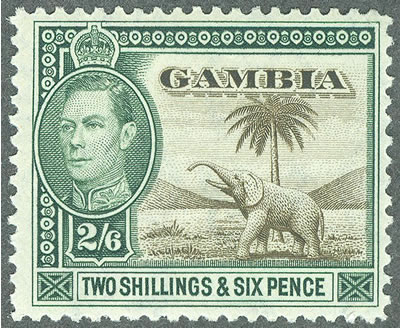
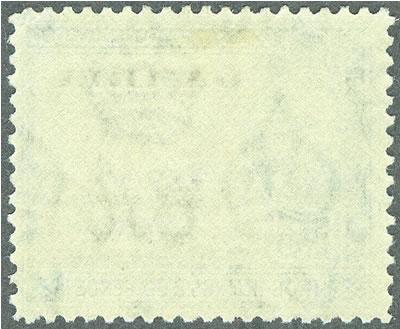
1/1946 Printing
Transparent, white gum
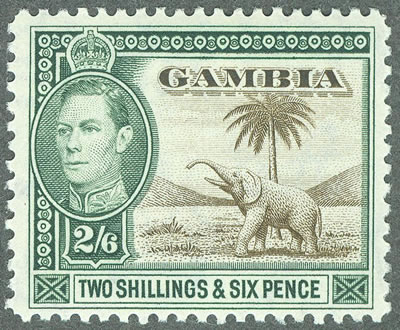

9/1950 Printing
Opaque, white gum
You cannot see the cracks that are visible in the 1938 printing in the scan, but they are very visible under a good light. The 1939 printing has a creamy colored gum and the watermark is not very transparent which makes the paper appear thicker. The 1947 is whiter and brighter paper compared to the other two. I found a lot of 1938 printings, and not many of the other two. So if you can't decide on your stamps, they are probably from the 1938 printing.
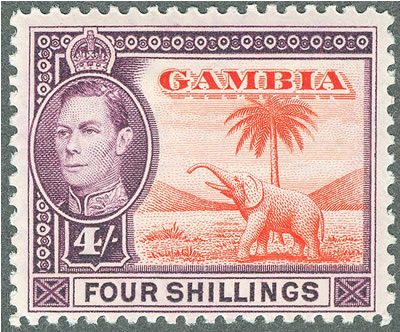

1938 Printing
Whitish gum
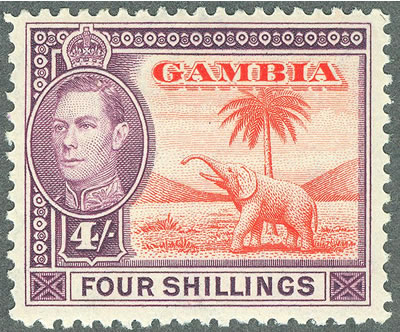
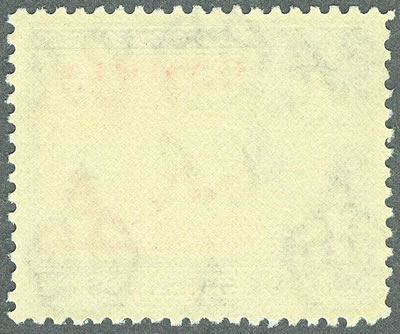
1939 Printing
Cream gum
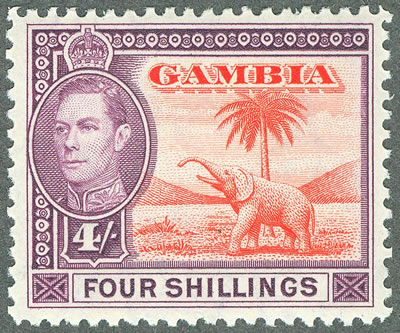
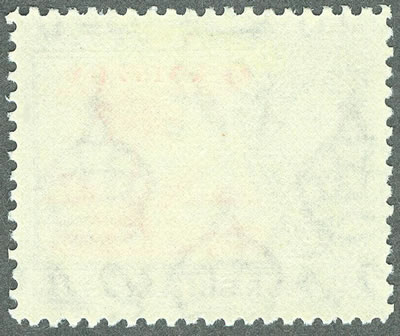
1 /1947 Printing
Opaque, white gum
You cannot see the cracks that are visible in the 1938 printing in the scan, but they are very visible under a good light. The 1939 printing has a creamy colored gum and the watermark is not very transparent which makes the paper appear thicker. The 1947 is whiter and brighter paper compared to the other two. I found a lot of 1938 printings, and not many of the other two. So if you can't decide on your stamps, they are probably from the 1938 printing.
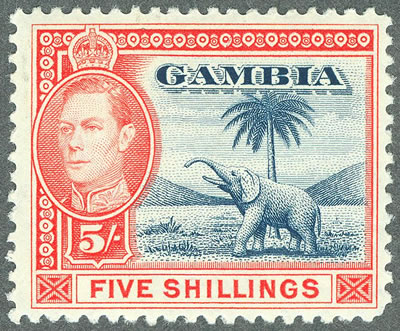
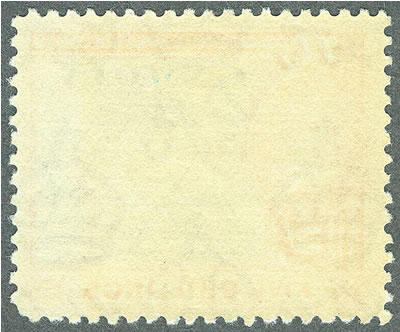
5/ Dark Grey-Blue & Vermilion
1938 Printing
Whitish gum
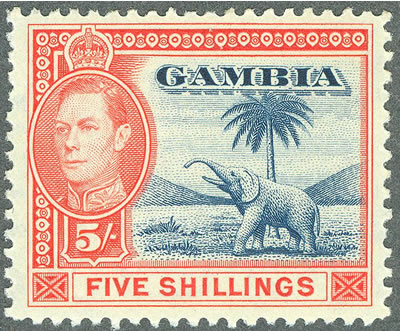
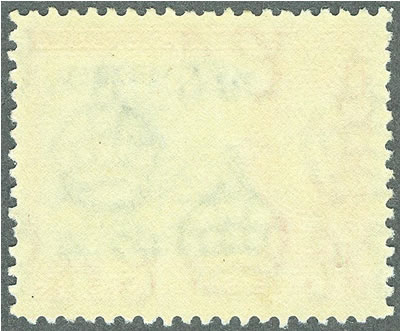
1939 Printing
Cream gum
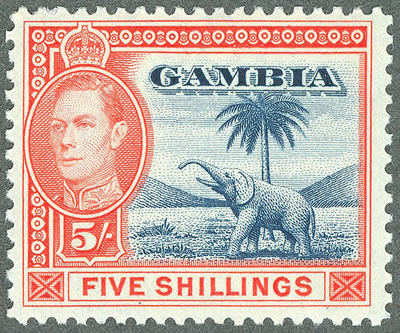
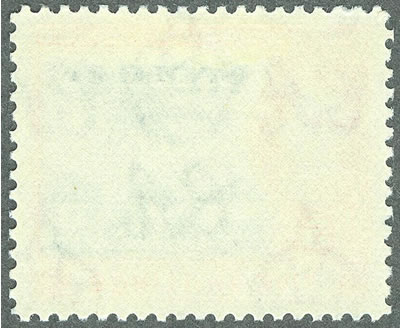
1 /1947 Printing
Opaque, white gum
You cannot see the cracks that are visible in the 1938 printing in the scan, but they are very visible under a good light. The 1939 printing has a creamy colored gum and the watermark is not very transparent which makes the paper appear thicker. The 1947 is whiter and brighter paper compared to the other two. I found a lot of 1938 printings, and not many of the other two. So if you can't decide on your stamps, they are probably from the 1938 printing.
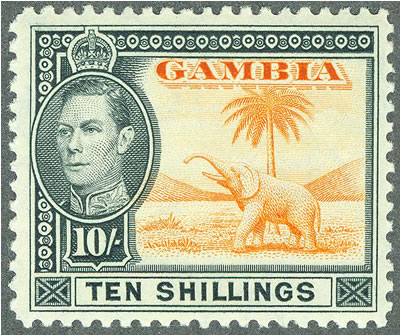

10/ Orange & Grey-Black
1938 Printing
Whitish gum
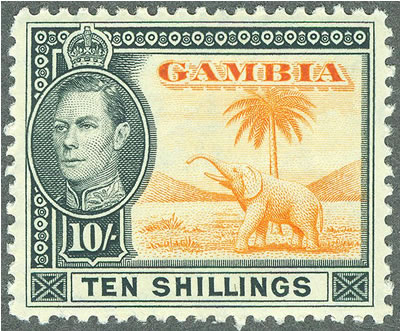

1939 Printing
Cream gum
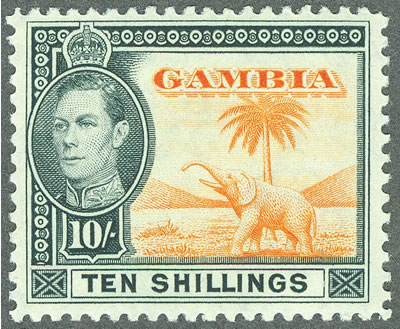
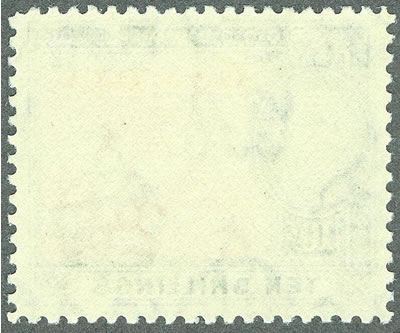
10/1944 Printing
Transparent, white gum
This article was written to help you identify
your stamps.
Please feel free to ask a question, or include a correction.